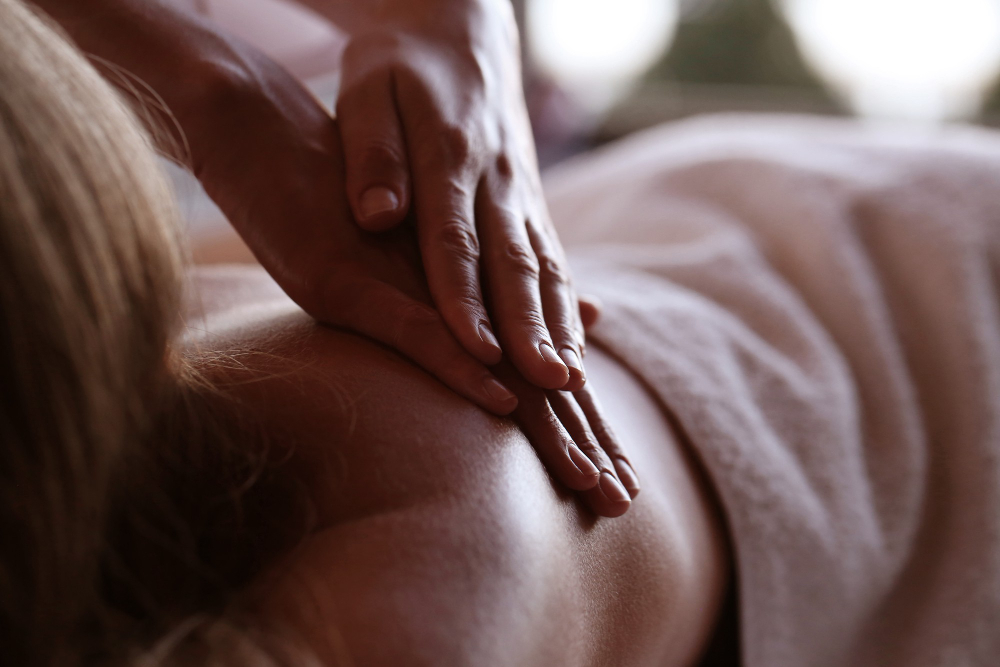Your ankle is the joint that connects your foot to your leg, supporting your weight while you stand and move, while also giving you mobility. So, when an injury to it makes you unable to walk or move as much, you can feel particularly helpless.
Whether you’re an avid fitness lover or work a desk job, having an injured ankle is not only painful, but debilitating. In this blog, we’re going to take you through the different types of ankle injuries and pains, as well as remedies and rehabilitation for them.
Types of Ankle Injury
There are a variety of different injuries you can suffer with in the ankle that can debilitate or cause pain. From sprains to strains, let’s explore the types of ankle injuries you could be suffering with.
Sprain or Twist – Probably the most commonly known type of ankle injury, a sprain (also known as a twist) can be very painful and leave you unable to walk properly for a couple of weeks. A sprain can occur if you step at an awkward angle, or if you try to continue walking when your foot is unknowingly caught in something. This affects the ligament in your ankle.
Strain – Similarly to a sprain, a strain affects the soft tissue in your ankle, which could be a strained tendon or muscle. You may have strained your ankle by overexerting it during exercise
Achilles Tendinopathy – The achilles tendon connects your calf muscle to your heel bone, allowing you to push off from your foot when you walk or run, stand on your tiptoes and helps you to bend your knee. This injury is also called an achilles tendon rupture, as this is what occurs when the tendon ruptured or torn through intense exercise or trauma, such as a hard or uneven landing during a fall.
Bursitis – Bursitis occurs when you exert your ankle during intense physical activity. This is when your bursa, which acts as a cushion to protect the back of your ankle and heel, gets inflamed. It can cause pain in your heel or when you tiptoe, as well as swell up at the back of your heel.
Bruising – Bruising may occur from a smaller injury such as hitting your ankle against something, which may cause pain and hinder your ability to walk a little, but not significantly.
Fracture or break – If you break your ankle, you will need medical attention immediately. A fracture or break can occur in different ways and can be deeply painful, often causing swelling, redness and numbness in your toes too. This kind of injury will take longer to heal, but could potentially impact you for the rest of your life, as it may mean you are more likely to get arthritis in this area.
Ankle Pain Without Injury
There are also ways you can experience pain in your ankle that haven’t been caused by injury. Usually these are different types of arthritis, so let’s take a look at what they might be:
Gout – Gout is a type of arthritis which occurs when uric acid crystallises in your joints, causing severe pain, often most noticeably in your big toe. Additionally, you may find that the skin is red, hot and swollen around the painful area. When aggravated, the gout can occur as an attack, which can last between five and seven days before getting better.
Osteoarthritis – Another form of arthritis, osteoarthritis is the most common form in the UK. While the cause of it is unknown, it is suggested that age, weight, family history and past joint injuries can be contributing factors. Osteoarthritis occurs when the cartilage on the ends of your bones breaks down, which makes the bone vulnerable. It can cause swelling, as well as pain. There is not a cure for this condition, but it can be managed in the ways suggested in the sections below.
Plantar Fasciitis – Plantar Fasciitis is a pain near your ankle, around your heel or the arch of your foot. It can feel more painful when you try to raise your toes from the ground or when you start walking after lying down. It can also cause swelling.
How to Avoid Ankle Injury
Sometimes ankle injuries just happen, and are particularly common in sports, like running, tennis and football. But steps can be taken to decrease the risk of injury by taking some extra precautions:
Know your limits – Assess the physical activity you plan on carrying out and decide if it really feels right to you. If there is anything you aren’t certain of, or you are pushing yourself because you worry you won’t be satisfied with what you’ve achieved so far, stop. It is better to build up to things slowly and take breaks when you need to, rather than push yourself too far and suffer for it later on.
Warm up and cool down properly – When you exercise, you don’t want to push your body beyond its limits, as explained in the point above. Make sure you always take the time to warm up and cool down, before and after exercise, for at least five to 10 minutes.
Watch how you step – if you tend to walk on your tiptoes or your feet are turned slightly outwards as you walk, you may be slowly causing damage to your ankles and other parts of your body over time. Make sure you walk correctly, with your feet facing forward, going from heel to toe as you walk.
Check you’re wearing the right shoes – If your feet aren’t being properly supported during physical activity, then you could be causing damage not just to your ankle, but potentially to other areas in your legs and feet. Investing in a pair of shoes may seem expensive, but ultimately, if they last a long time and help prevent you from injury, then you are unlikely to regret it.
Ankle strengthening exercises – While some injuries may need rest or medicinal treatment, there are others that can be improved through consistent, gentle exercise. Read the next section to learn what they are.
Rehabilitation
The three main things to strive for when rehabilitating your ankle are balancing, stretching and strengthening. If you aim for these when exercising your ankle, you can strengthen it, which should hopefully help you avoid re-injury. Here are some ankle exercises you can try, all of which also target other muscles in your legs and feet:
Scrunches – Place a small, soft item such as a small towel, tissue or dish cloth in front of you, while you sit upright in a hard chair, barefoot. Grab the towel, tissue or cloth with your toes, scrunch it up and count to five, as you hold the scrunch. Then release and repeat for up to ten times, depending on how much pain you feel.
Resistance Band Stretch – You can use a towel or easy-stretch resistance band for this exercise. Sit on the floor with the leg of your sore ankle out in front of you. Wrap the resistance band around the ball of your foot, then pull it back so that your toes stretch toward you. Hold this position for fifteen seconds. Aim to do the exercise five times, or at least to the point you feel a small stretch in your calf muscle.
One Leg Balance – It is best that you do this exercise in front of a wall or flat surface so that you can press against it if you feel yourself lose balance, although over time, you may not feel the need for a supportive surface to lean on. Stand facing the wall or flat surface you want to lean against (such as a countertop or table top) then bring the foot of your good ankle up behind you and hold it, as you balance on the leg of the weaker ankle. Hold this for 10 to 15 seconds, then gently put your other foot back down. Aim to repeat at least 10 times.
What to Do if Pains Get Worse
If you’ve identified the cause of your ankle damage and have worked to fix it, but still find that there’s pain, don’t worry. If you find that rehabilitation exercises increase your pain, stop doing them. Book an appointment to speak with your osteopath or physio, so that they may help you find out if there are any further issues with it and can tell you how to resolve it if so. Some issues may be healed through rest and time, but others may be more permanent and will need long-term care, such as painkillers, to help you manage it.
Until you have attended your appointment, try to rest your ankle where you can, elevating it when you do so. Additionally, if a symptom of the pain is swelling, apply ice to your ankle to try and reduce this, which should also reduce some of the painful sensations you feel in it too.
Most of us are used to walking around without much thought to it, so injuring your ankle can feel challenging to face, as well as physically painful. We hope that this article has helped you to identify your own ankle pain and see how you might heal it.
If you still have questions about your ankle pain and want to know more about how it might be treated, you can contact us to see how we can help you.





